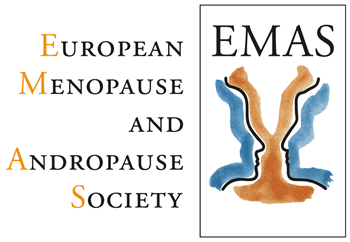Intro: Menopause and menstrual health policy are becoming increasingly important areas of focus in the workplace and public health settings.
Ensuring that policies are inclusive of the needs of menopausal and menstruating women can help alleviate the stigma and challenges faced by individuals during these life stages, promoting better well-being and equality in various societal domains.
Understanding how menopause impacts various aspects of health is crucial for creating a supportive workplace.
This podcast episode brought to you by the European Menopause and Andropause Society features Professor Kathleen Riach discussing how menstrual health policies can address the challenges faced by menopausal and menstruating individuals in the workplace. Let’s dive into today’s discussion.
Kathleen Riach: Hello, my name is Kathleen Riach and I’m a professor at Adam Smith Business School at the University of Glasgow in the UK. I’m the convenor of the forthcoming ISO standard on menstruation, menstrual health and menopause in the workplace.
Now, evidence is now firmly established that there’s a two-way relationship between menopause and work. Symptoms associated with the menopause can have an impact on employee engagement and satisfaction. At the same time, features of workplace and job design, such as lack of control over the physical environment or low levels of job-based autonomy can exacerbate symptoms.
In particular, studies have shown that high levels of supervisory support can positively offset the frequency and bothersomeness of menopausal symptoms.
Within organisations, menopause support can be situated as part of a broader suite of practices to encourage gender equality across the life of course that sits alongside maternity or menstrual health initiatives, for example.
Alternatively, it can be part of a work package that supports mental health and well-being at work that pays attention to, for example, heart disease and other conditions more likely to impact all employees as they grow older. However, features of workplace menopause support usually include four elements.
The first element is the development of policy and resources. This can be in the form of a specific menopause policy to signal an organisational commitment to being menopause inclusive, but should also ensure menopause is embedded into the organisation through being cross-referenced into other policies within the workplace such as being mentioned in flexible working guidance or occupational health and safety protocol. Resource allocation should also be made to support initiatives such as support networks, and awareness raising campaigns, or to help create protocols or guidelines to support those who are managing menopausal employees.
The second element is training, especially for line managers and supervisors. This is because the first conversation an employee has with someone in a position of authority in their workplace can make a significant positive or negative difference to whether they feel they can work through menopause or not. Now we don’t need managers to be experts about menopause and they certainly shouldn’t be giving menopause or health-related advice, but they do need to be scaled up in how to have a positive and productive conversation about supporting menopause at work, should an employee approach them. As well as know where they can go to get further advice or guidance about how they can practically support that employee.
The third element of menopause support at work is education and awareness where everyone in the workplace is able to access evidence-based, reliable and accessible information about menopause transition and menopause-related health. These do not have to be created by the organisation themselves but can be signposted to high-quality existing resources such as those found on the EMAS Menopause Essentials webpage.
The final element of a menopause policy is creating a culture that encourages a collaborative approach to finding solutions that keep employees in work in a capacity they feel comfortable, recognising that this might change over time as their symptoms evolve. Often the best support mechanisms are low resource but high impact, such as being able to quickly access a cheap fan without excessive bureaucracy or utilising flexible working practises when required. And if there is concern over whether this is the right solution, workplaces should be open to considering a trial period to see if it works for both the employee and the organisation.
Employees going through menopausal transition are a vital and valuable part of the workforce, and organisations to support them will be rewarded not only in employee engagement and satisfaction and low staff turnover but also in creating an inclusive workplace environment for everybody in work.
For further details, you can read the EMAS Menopause Essentials on Menopause in the Workplace available for free through the Menopause EMAS website or go to the Menopause Information Pack Online at [email protected] or download the current British Standards Institute guidelines on menstruation, menopausal health and Menopause.
Or if you’re interested in reading more about the employee experience of menopause in the workplace, download a free copy of the Amino Study of over 3000 employees’ Experience of Menopause at Work from either the Scottish Government, NHS Scotland website or the University of Glasgow webpages.


